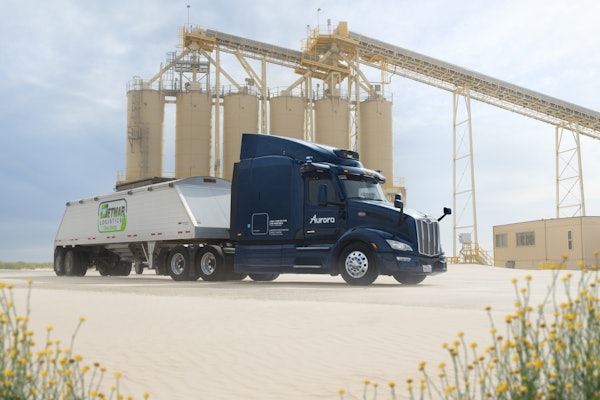All carriers likely have the minimum security needed to thwart thieves and unwanted visitors – locks. But if and when a security breach happens, even the most tamper-proof locks won’t gather evidence or issue alarms.
Electronic access control systems add a greater degree of security to cargo, equipment, computers and other sensitive information and assets at facilities. These systems also automate the manual tasks of issuing keys, locking doors and changing locks. Access control systems often come with PC- and network-based software applications to set up access restrictions for each individual, as well as tools to audit dates, times and locations of entry.
Kaba Mas, which already markets a trailer lock using a radio frequency identification (RFID) tag as a key, is developing a portable RFID access control lock for securing gates and other access points. The RFID identifiers are easy to combine with separate access control systems for buildings or perimeters: Simply stick a label with the embedded RFID chip on the back of a magnetic swipe or separate RFID card, says Steven Pollock, director of marketing for Kaba Mas.
Fleet managers can set parameters for each trailer or portable lock, such as the times of day it can be opened. The locks store a log of all open/close events, and fleet managers can use a PC-based software application to audit the log when exceptions occur. The next version of the software will allow for networking among multiple facilities, Pollock says.
Intrusion detection and closed-circuit television (CCTV) systems add an additional layer of alerts and fact gathering. As with most technology in demand, the cost of high-tech security systems continues to drop, and functionality continues to increase. The latest systems can provide intrusion detection and recording in one device, along with a feature called video content analysis, says Dr. Bob Banerjee of Bosch Security Systems.
For example, cameras that are set up in a network around the perimeter of a yard can alert fleet managers of intruders after hours by using motion detection. When a moving object is detected, a video can pop up immediately as an alarm on a desktop computer in the office or at home. Combined with an access control system, an alarm could trigger a video alert of someone entering a door when he shouldn’t, Banerjee says.
A new monitoring technology called video content analysis can be used with CCTV to detect security breaches in real time. Using a software application, a fleet manager could – with the click of a mouse – take a reference picture of a stack of cargo in the terminal. If any object in the picture disappears, the application would trigger an alarm or a text message to a cell phone or other device.
“It is a popular application for those that don’t want to use motion detection, but if anything in the image disappears, they want to know it,” Banerjee says. The intelligent application costs as little as $200 per camera and is very reliable, he says. “It’s not rocket science anymore.”
Banerjee sees more uses for combining data with video – for example, using data from mobile communications systems in trucks to identify a vehicle as it passes through a gate, along with a video record of the time, date and location.
Using a technology called Video Over IP, fleets that use intrusion detection, CCTV and video content analysis applications at multiple terminals can manage security from one central office through the Internet. However, sending live, streaming video through a company’s network would use up to 1 megabyte per second, per camera. “You’re going to kill your network instantly,” Banerjee says.
Another approach is to send live video from all locations to the corporate office through the Internet at a lower resolution, between 50 and 100 kbps, Banerjee says. The original high-resolution video can be stored and retrieved on demand from each terminal when incidents occur.
Choosing among different security systems can be a daunting task, but the fundamental “layers” are the same: access control, intrusion detection and CCTV. Chances are at one point in your future, you may want all three.









